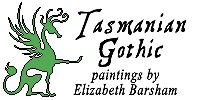While waiting for the train at the Nice railway station the next morning just after 8 o’clock I heard one of the party say to his companion as he threw away the last match in the box after lighting a cigarette, “I say, Jim, if you had one more match and you wanted to light a fire, a gas stove and a cigarette, which would you light first?” The reply was, “I would make sure of it by lighting the gas stove first!” Then his companion said, “But you would FIRST light the MATCH!” There is nothing like getting up early to brighten your wits.

We went along the coast as far as Ventimiglia in the train, which is just inside the Italian border. Here we had to change from the French train which was a very dirty, smoky train, to a very modern electric Italian train. This would not have taken very long, but there were the usual formalities to go through on account of leaving France and entering Italy. Our passports were examined, all of our bags were opened and searched more thoroughly than elsewhere and we had to get Italian money after completing a declaration showing the amount of other money we were carrying. All this took about an hour and it was a very tiring business. It is very nice to leave as much as possible of this part of the trip to Cook’s men and they are a great help.
Immediately the train left the station we had lunch in the dining car. It was a very good meal of six or seven courses, and notwithstanding the spaghetti it was enjoyed by all on account of our very early breakfast under French conditions – coffee and rolls.
There were police and soldiers on the train and at every station. We knew of the visit of Mussolini and Hitler which was to take place in a day or two and there were preparations being made everywhere for their reception. Although we were only in the train for a few hours we went through over 100 tunnels.
The train followed the Mediterranean coast all the way, and the scenery was very good. We saw splendid gardens all the way, many of them consisting of nothing but the terraces on the side of very steep hills. There were also many more of those old villages built on the peak of high hills. These were the same cluster of houses built in one solid mass as far as the outside is concerned and having very narrow paths and roads on the inside.

We arrived at Genoa at 2.30 and as soon as our passports were again inspected and the names of our fathers and mothers were taken down in the hotel records, we left in a motor bus for a tour of the city.
Genoa is a very old city. It contains some most beautiful old palaces of kings and princes.

These are buildings of six, seven and eight stories and yet they are in such narrow streets that you almost break your neck endeavouring to see the top of them.

It was impossible to take any photos. from the bus and I am afraid my description of them will be very poor.

All of the streets in Genoa are very narrow. In the oldest part we saw places between rows of high buildings which were not three feet wide and yet they were given the name of streets.

We drove to the cemetery, of all places, but this was because the guide said it was different from anything else in the world, and I afterwards believed him.
The population of Genoa is approximately 650,000 and yet there is only one cemetery for the whole population. This accounts for the most uncommon method of burying the dead.

We went through several long corridors with marble monuments on both sides. There were literally hundreds of them. A separate place on either side was allotted to a family. Under the marble slabs which form the pavement upon which we walked, there were thousands of bodies buried five deep. These were only known by a number and there was no inscription upon the slabs, which were about two feet wide and six feet long.

Many of the monuments were carved out of one solid piece of marble and the work was beautifully and artistically done. They were not the ordinary type of monument, for in most cases they had a definite meaning. There was one I photographed which struck me as being most outstanding. A person died and she asked that a statue of a monk might be placed at the spot of her burial in the attitude of prayer so that she might have prayers constantly offered for her soul. Her people found a monk who was willing to have his statue at her grave and as he was also a sculptor, he carved his own figure life size with a prayer book in his hand. It was a most beautiful piece of work. There were many others, but it would take a volume to describe them.

We visited other parts of the city where we could get a good idea of its size and the conditions under which the people live.




Nice weblog right here! Also your web site rather a lot up fast! What host are you the use of? Can I am getting your associate link for your host? I want my web site loaded up as fast as yours lol
LikeLike
Wow, wonderful weblog layout! How long have you been running a blog for? you made running a blog look easy. The full look of your website is great, as smartly as the content!
LikeLike
Thank you, Alex!
LikeLike